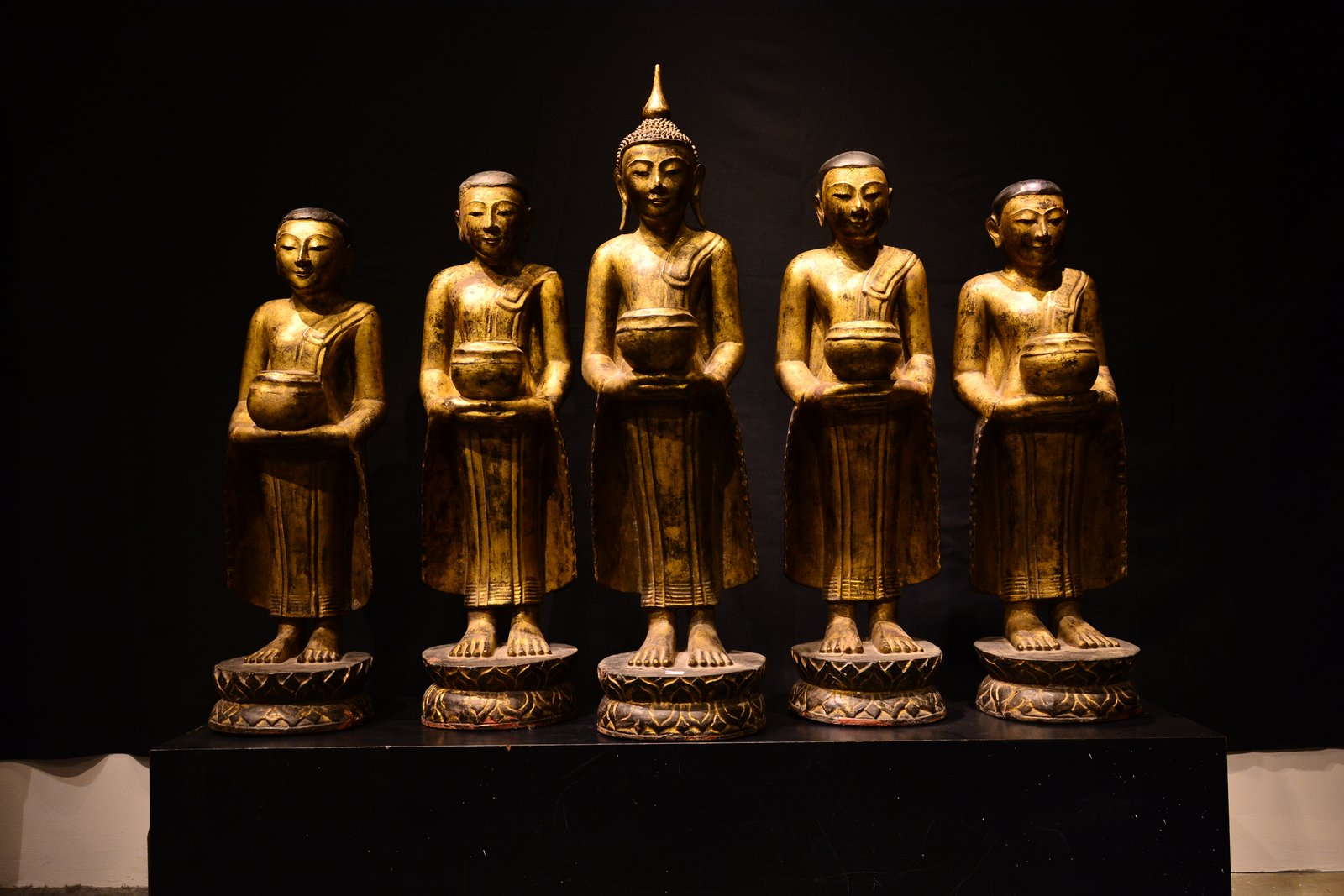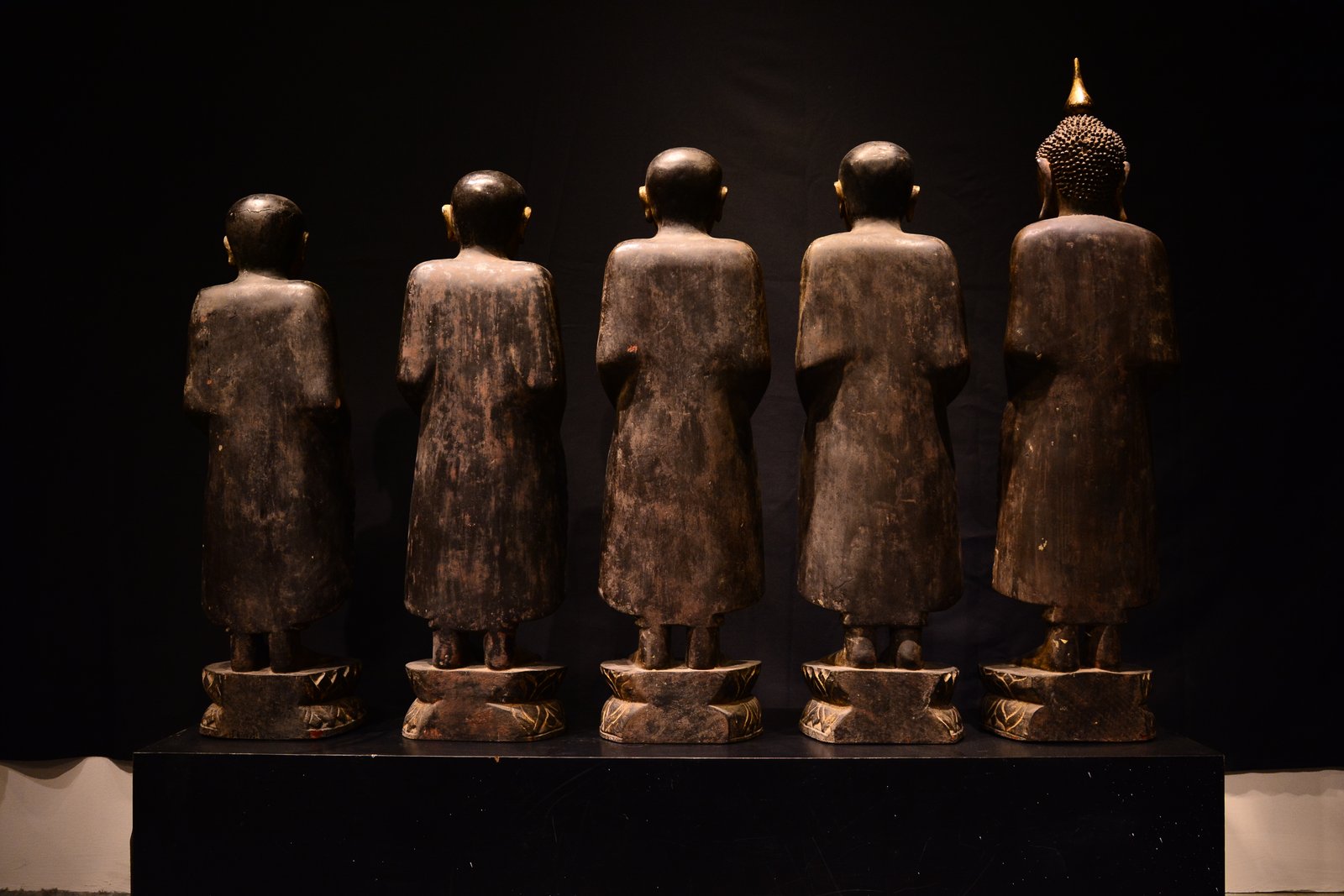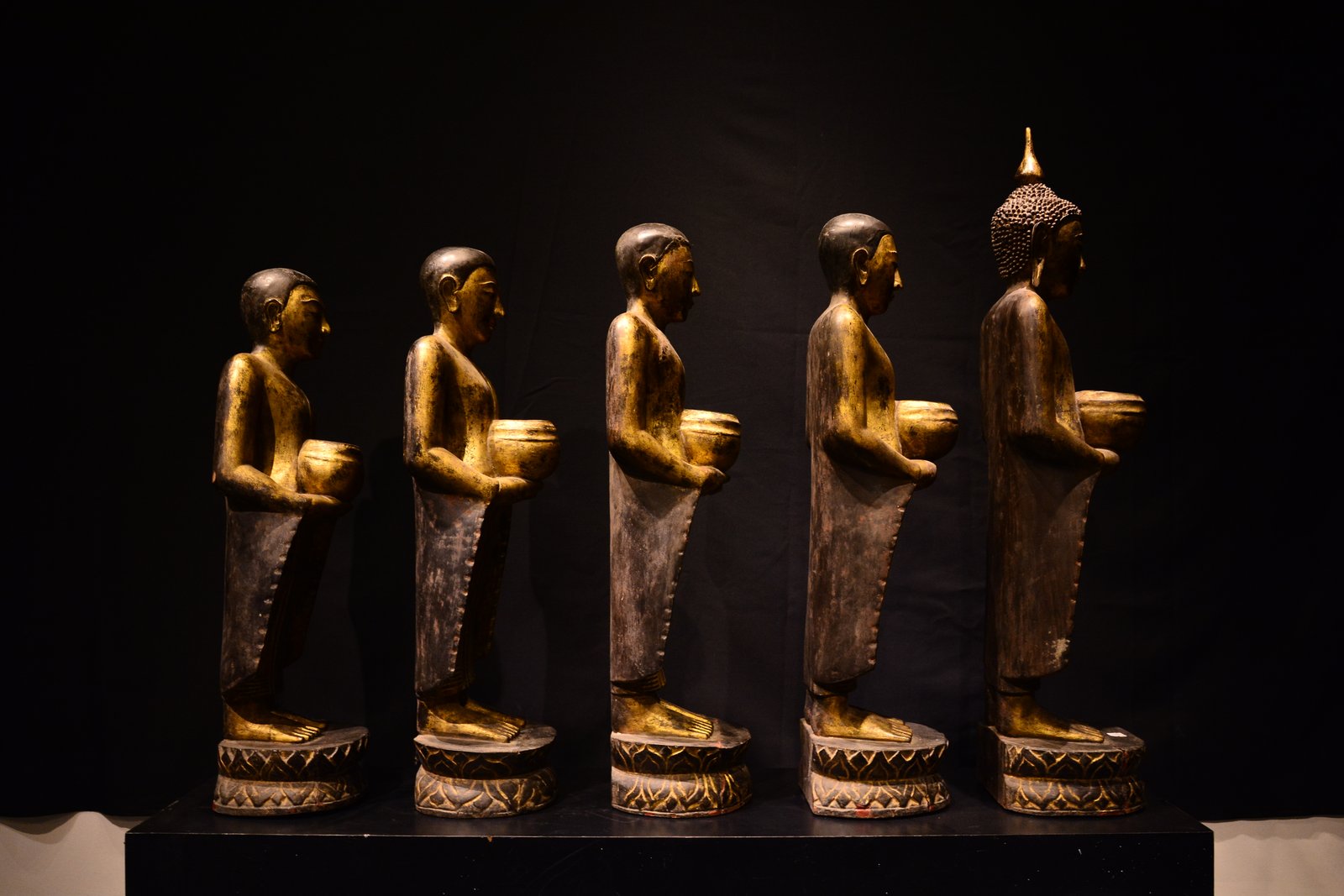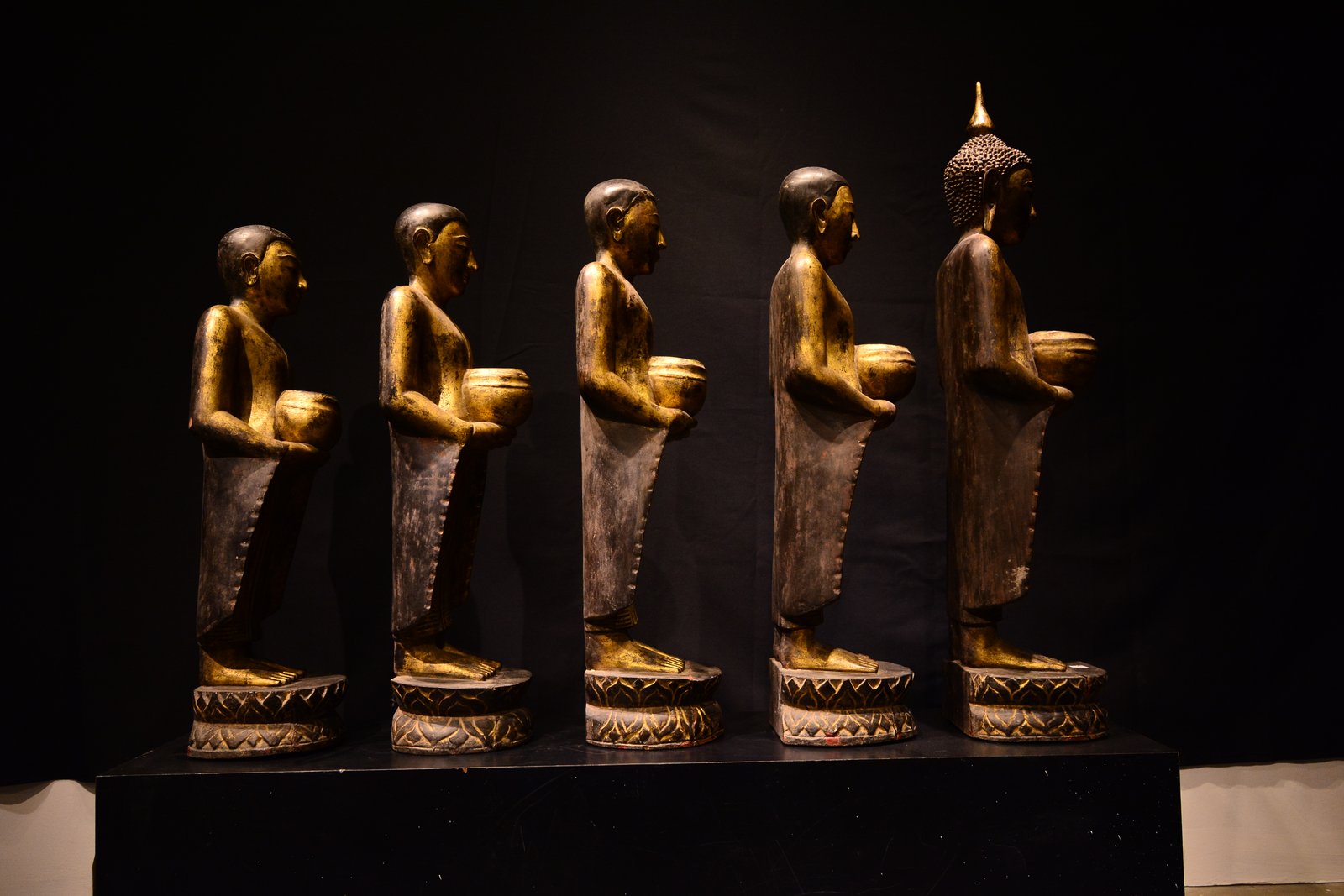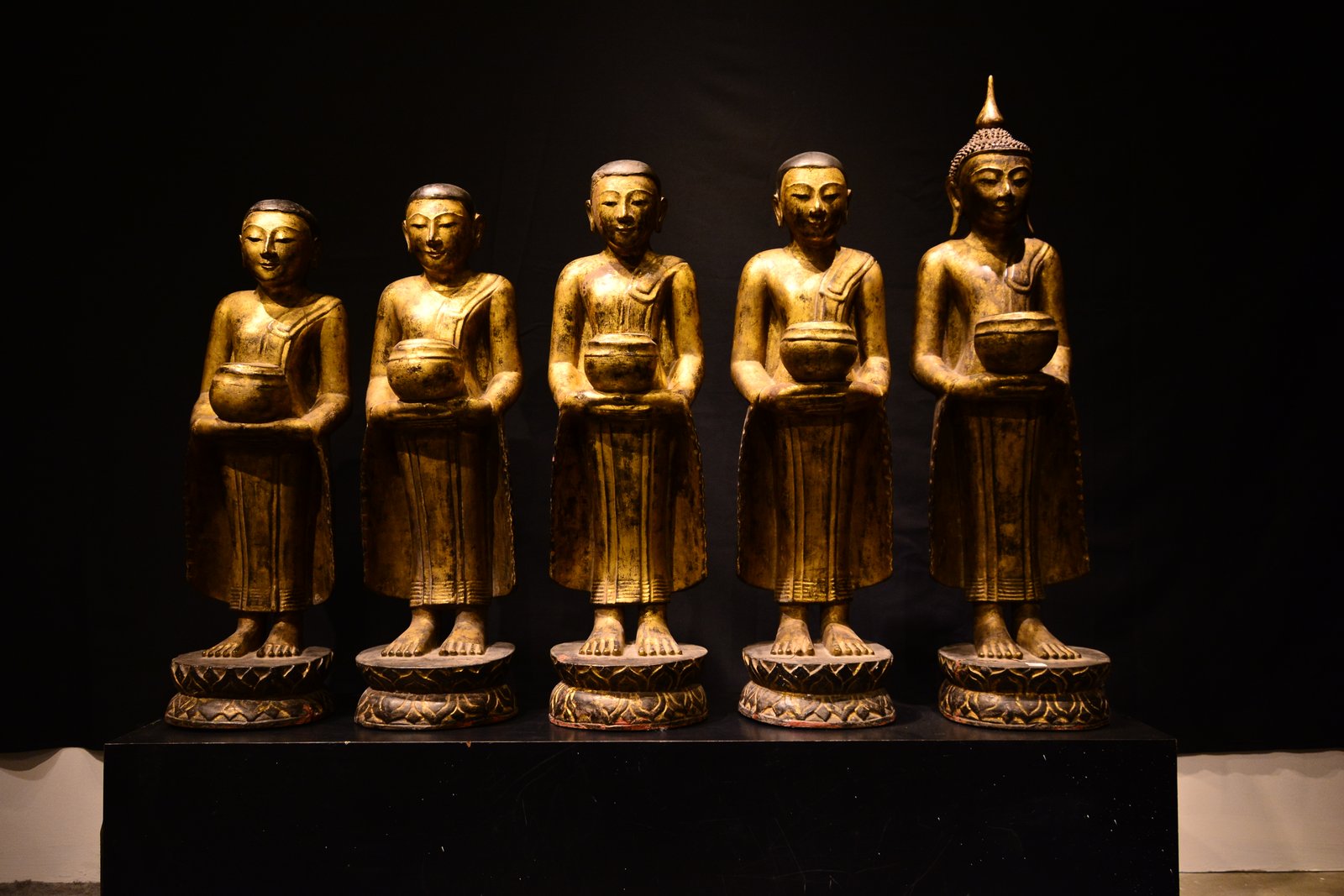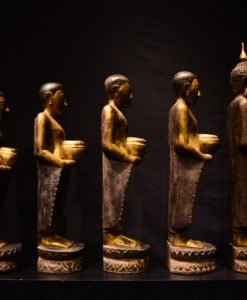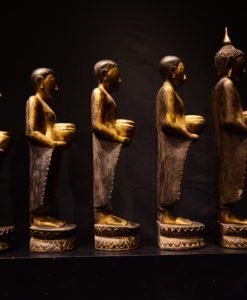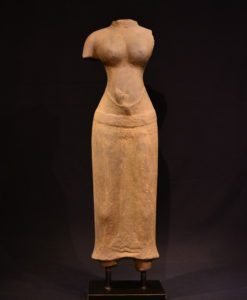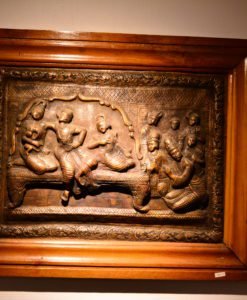Five Gilded Monks with Central Buddha – Mandalay Period, Myanmar (c. 1900–1930)
This striking set of five individually-carved wooden statues forms a rare and harmonious procession of monastic devotion, originating from the Mandalay period of Burma (now Myanmar), circa 1900–1930. The ensemble comprises four serene alms-offering monks flanking a crowned Buddha, the tallest and central figure, all of which are sculpted in teakwood and finished with traditional lacquer and partial gilding.
ITEM DESCRIPTION
Standing at an impressive 82 cm tall at its highest point, the composition is defined by its rhythmic symmetry and subtle decline in figure height from center to edge, reinforcing the Buddhist notion of spiritual gravity radiating outward from the Enlightened One. Each figure is elevated on its own lotus-style base, though together they form a cohesive horizontal line—reminiscent of processional sculptures that adorned temple altars or household shrines in upper Burma during the late Konbaung and early colonial eras.
The central Buddha is crowned, with a crisply carved ushnisha and flame finial, symbolic of awakened knowledge. His facial expression is meditative yet watchful—suggesting a compassionate awareness of the spiritual dedication around him. His four monastic attendants, holding simple hemispherical alms bowls at chest level, adopt a humble posture with downcast eyes and modestly wrapped robes. Their gestures reflect the ritual of morning alms—an enduring practice central to Theravāda Buddhism in Southeast Asia.
The wood is likely to be teak, a favored material in Burmese sculpture due to its durability and fine grain. The surface bears traces of glossy gilding, worn delicately with time to reveal the dark lacquer underlayer. This aged patina adds a warmth and authenticity that enhances its devotional character. While some lacquer has naturally thinned, there is no evidence of restoration, preserving the original artisan’s vision in full.
These figures were likely intended for display in a monastic hall or the shrine room of a wealthy patron. Their size and stylistic unity suggest a commissioned set, made for devotional contemplation and ceremonial use. While the provenance is undocumented, the stylistic fidelity, gilding method, and iconographic accuracy all place this work securely within the Mandalay sculptural tradition—a period known for its refined spiritual aesthetics and expressive grace.
Ideal for connoisseurs of Burmese Buddhist art, spiritual interiors, or museum-quality collections, this ensemble offers a compelling blend of form, faith, and finesse. Whether viewed individually or as a group, the statues invite the observer into a quiet ritual of mindfulness—frozen in wood and gold, yet deeply alive.
Dimensions:
-
Central Buddha: Approx. 82 cm H
-
Monks: Gradually descending in height
-
Total Width of Grouping: Approx. 66 cm
-
Base Diameter (Each): Approx. 15 cm
Medium & Condition:
-
Material: Teakwood (assumed), lacquer, and partial gilding
-
Surface: Glossy gilded areas with patinated lacquer exposure
-
Condition: Excellent, no visible cracks or restoration
References:
-
Stadtner, D. (2005). Sacred Sites of Burma: Myth and Folklore in an Evolving Spiritual Realm. River Books.
-
Fraser-Lu, S. (1994). Burmese Crafts: Past and Present. Oxford University Press.
-
Lowry, J. (1974). Burmese Art. Her Majesty’s Stationery Office, London.
-
Guy, J. (2014). Lost Kingdoms: Hindu-Buddhist Sculpture of Early Southeast Asia. Metropolitan Museum of Art.
Origin: Myanmar
Period: Mandalay
PRODUCT DETAIL
Medium: Wood
Dimensions:
Height 82 cm
Length 15 cm
Wide 66 cm
Condition –
Please keep in touch for Price and more information: Mallika1013@gmail.com



